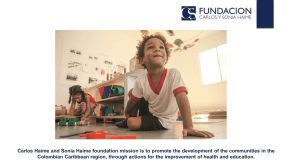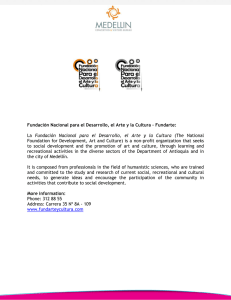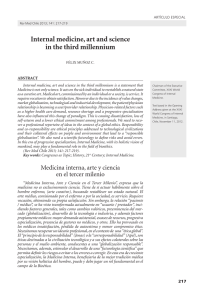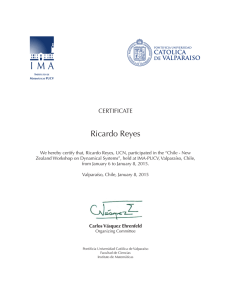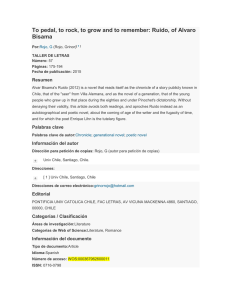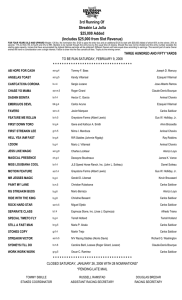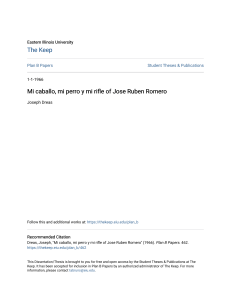Art Activism in Latin America
Anuncio
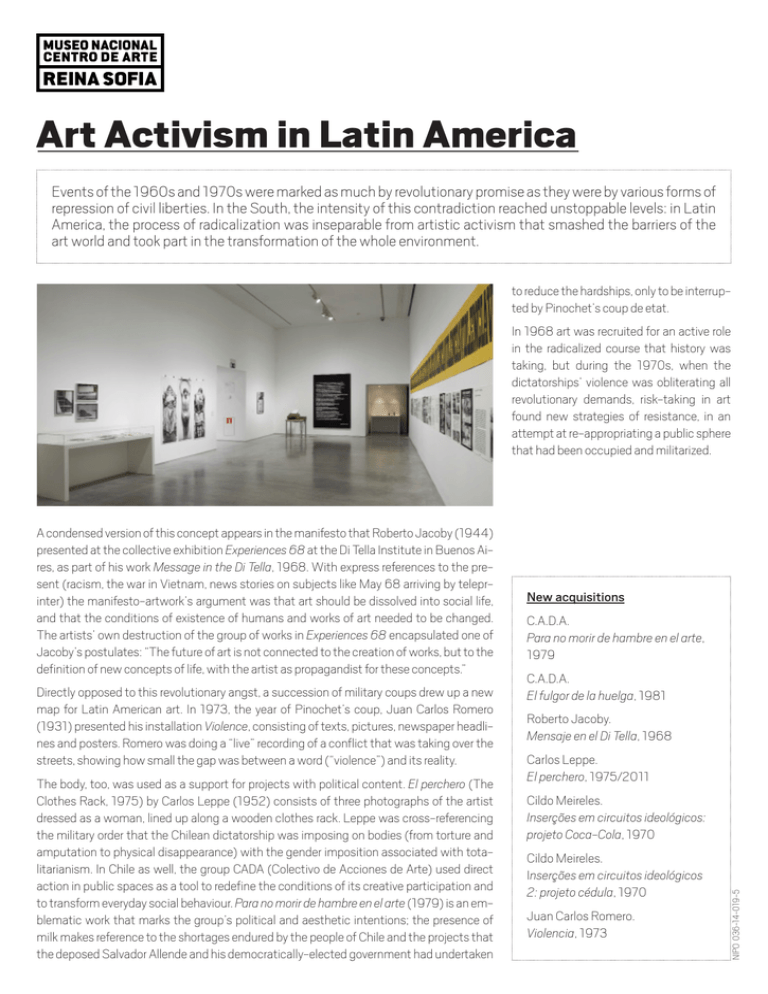
Art Activism in Latin America Events of the 1960s and 1970s were marked as much by revolutionary promise as they were by various forms of repression of civil liberties. In the South, the intensity of this contradiction reached unstoppable levels: in Latin America, the process of radicalization was inseparable from artistic activism that smashed the barriers of the art world and took part in the transformation of the whole environment. to reduce the hardships, only to be interrupted by Pinochet’s coup de etat. In 1968 art was recruited for an active role in the radicalized course that history was taking, but during the 1970s, when the dictatorships’ violence was obliterating all revolutionary demands, risk-taking in art found new strategies of resistance, in an attempt at re-appropriating a public sphere that had been occupied and militarized. A condensed version of this concept appears in the manifesto that Roberto Jacoby (1944) presented at the collective exhibition Experiences 68 at the Di Tella Institute in Buenos Aires, as part of his work Message in the Di Tella, 1968. With express references to the present (racism, the war in Vietnam, news stories on subjects like May 68 arriving by teleprinter) the manifesto-artwork’s argument was that art should be dissolved into social life, and that the conditions of existence of humans and works of art needed to be changed. The artists’ own destruction of the group of works in Experiences 68 encapsulated one of Jacoby’s postulates: “The future of art is not connected to the creation of works, but to the definition of new concepts of life, with the artist as propagandist for these concepts.” New acquisitions Directly opposed to this revolutionary angst, a succession of military coups drew up a new map for Latin American art. In 1973, the year of Pinochet’s coup, Juan Carlos Romero (1931) presented his installation Violence, consisting of texts, pictures, newspaper headlines and posters. Romero was doing a “live” recording of a conflict that was taking over the streets, showing how small the gap was between a word (“violence”) and its reality. Roberto Jacoby. Mensaje en el Di Tella, 1968 C.A.D.A. El fulgor de la huelga, 1981 Carlos Leppe. El perchero, 1975/2011 Cildo Meireles. Inserções em circuitos ideológicos: projeto Coca-Cola, 1970 Cildo Meireles. Inserções em circuitos ideológicos 2: projeto cédula, 1970 Juan Carlos Romero. Violencia, 1973 NIPO 036-14-019-5 The body, too, was used as a support for projects with political content. El perchero (The Clothes Rack, 1975) by Carlos Leppe (1952) consists of three photographs of the artist dressed as a woman, lined up along a wooden clothes rack. Leppe was cross-referencing the military order that the Chilean dictatorship was imposing on bodies (from torture and amputation to physical disappearance) with the gender imposition associated with totalitarianism. In Chile as well, the group CADA (Colectivo de Acciones de Arte) used direct action in public spaces as a tool to redefine the conditions of its creative participation and to transform everyday social behaviour. Para no morir de hambre en el arte (1979) is an emblematic work that marks the group’s political and aesthetic intentions; the presence of milk makes reference to the shortages endured by the people of Chile and the projects that the deposed Salvador Allende and his democratically-elected government had undertaken C.A.D.A. Para no morir de hambre en el arte, 1979 Bibliography Davis, Fernando. “Prácticas ‘revulsivas’. Edgardo Antonio Vigo en los márgenes del conceptualismo”, en: Cristina Freire y Ana Longoni (orgs.). Conceitualismos do Sul/ Conceptualismos del Sur. São Paulo: Annablume, 2009. Herrera, María José; Davis, Fernando y Perret, Danielle. Horacio Zabala. Anteproyectos (1972-1978). Buenos Aires: Fundación Alon, 2007. Longoni, Ana (ed.). El deseo nace del derrumbe. Roberto Jacoby. Acciones, conceptos, escritos. Barcelona: Ediciones La Central, Museo Nacional Centro de Arte Reina Sofía, Adriana Hidalgo y Red Conceptualismos del Sur, 2010. Neustadt, Robert. CADA DÍA: la creación de un arte social. Santiago de Chile: Cuarto Propio, 2001. Richard, Nelly. Márgenes e Instituciones. Arte en Chile desde 1973. Santiago de Chile: Metales Pesados, 2007. Romero, Juan Carlos; Davis, Fernando y Longoni, Ana. Romero. Buenos Aires: Fundación Espigas, 2010.
